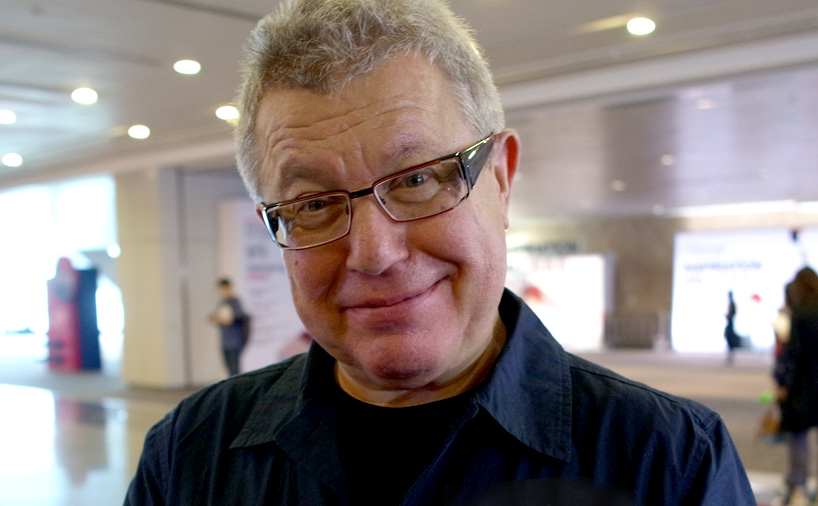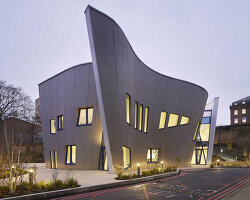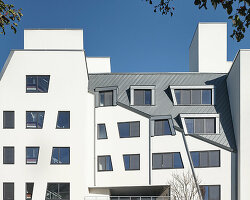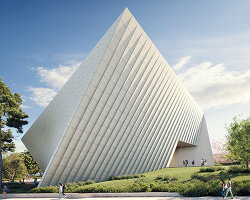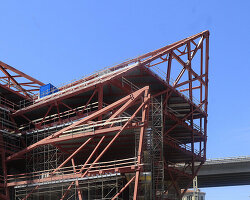architect daniel libeskindimage © designboom
designboom recently met up with internationally acclaimed architect daniel libeskind before his talk at the design library in milan. author of such works as the jewish museum in berlin and the MGM mirage city center, libeskind discusses the design philosophies and approaches that shape his unmistakable masterpieces, a follow up to our previous interview conducted ten years ago.
it was also a great opportunity to inquire as to his upcoming projects, focusing specifically on the ‘citylife’ master plan development in milan where construction on the museum of contemporary art and the arduino residential tower is already underway, joined by the likes of zaha hadid and arata isozaki.
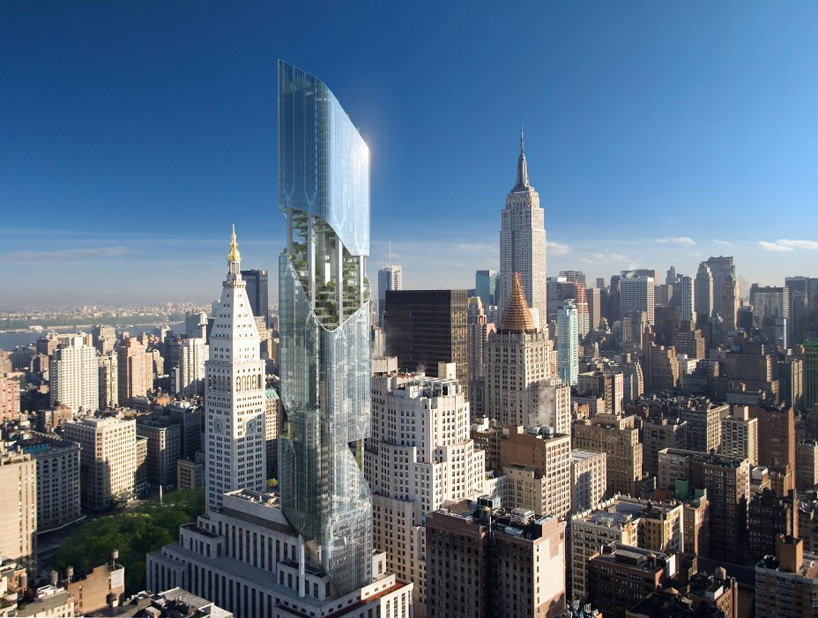 ‘green new york tower’image © dbox
‘green new york tower’image © dbox
db: what do you find is the most effective method for synthesizing your ideas?
libeskind: well, you have to be true to yourself, true to the project, and you have to love passionately what you do– have an intensity, a desire, so it’s not about putting hours of work– it’s a passion. yes, I think I can use the word love, it’s true. It’s a good substitute for it, if you’re an architect.
db: how do you negotiate between the essence of a building and the pragmatism of a building?
libeskind: sometimes you have to forget everything practical. the practical will, in any case, be there when you start trying to build something; but you can’t start with the practical. you can’t say, I have very little money therefore the building is going to be dull or I don’t have have the money to make something interesting, no, you have to start with an idea. no matter what budget, it doesn’t really matter. [it] could be high or it could be very low, it makes no difference. as adolf loos said, ‘if you gave me gold, I would still use wood.’
db: we have the luxury of working in a time where we can design in a space relatively unbound by geometry (rhino, cad, etc), does your work necessarily try to transcribe that condition in order to transcend [ideas about architectural space]?
libeskind: you know, everything is a means, everything is a symbol. everything speaks about something. I don’t think it’s a matter of the calculations or the statistics of geometry or what kinds of lines you can draw, what kinds of light lines you build in space. its about a vision. a vision which, in a way, is independent of the means you have to accomplish it. you know, bach composed for a solo violin and then the same piece was transcribed to a large mass in a church and then again into a secular cantata for just a small group and then into a large choral work– but it was about the idea. it doesn’t really matter what tools you have. what is the poetic idea of a building, of space, of people, of reality, of the future? much more than the technical ability. and you can be very good technically but produce absolutely nothing worthwhile. you can play a perfect concerto in the piano, perfectly play every note, but there’s no music there. vise versa, you can even make notes like richter did, or horowitz or rubenstien, often acknowledging it on their lps and cds- ‘we’ve made some mistakes on bar 55, we read the wrong notes’- it doesn’t matter because the music is there.
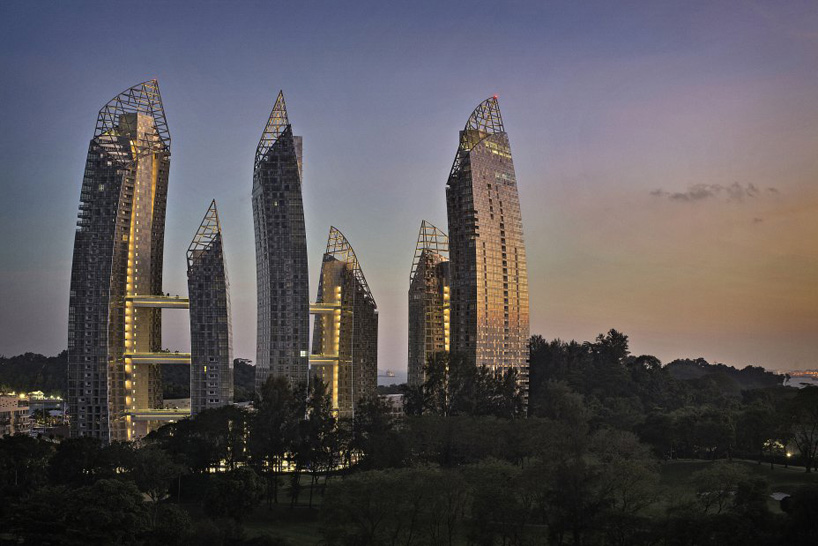 ‘reflections at keppel bay, singapore’ image courtesy of keppel bay pte ltd
‘reflections at keppel bay, singapore’ image courtesy of keppel bay pte ltd
db: so would you say in a way that [these ideas] are disconnected?
yeah, well everything is a means to an end. if you are only interested in the means, that’s something else; but I’m interested in the ends.
db: what are your parameters for success and failure?
never think of success. be ready to fail. take risks. if you don’t fail, you’ll never accomplish anything. for many years people thought I had failed– for half of my lifetime, maybe more. my first building was opened in 2001, the jewish museum in berlin. I had never built anything before. so people thought, you know, ‘what type of a person never built anything, not even a small extension to a garage?’ but, don’t think of success.I don’t think of success. think about what you want to do. …and, failure is noble. fail. if you don’t get to build something, [draw] it. look at piranesi, one of my favorite architects, only did one building. not so lucky as I am [laughs], but what an incredible architect through his drawings. so, there are many ways.
db: what kinds of opposition to do you find when you’re trying to preserve the idea of a building and translate it into something tangible?
I don’t think you give anything up. on the contrary, the reality of the building is what makes it the true art. you have to be able to go through the complex difficulties of making an idea which might only be in sketch form or only even in your mind because you can’t even represent it in way, except perhaps in a drawing. that’s the challenge, I think, to take that and realize it, not just talk about it. every architect talks well about their buildings, and every building sounds fantastic and every building even looks good in a photograph– it’s only when you go to them that you realize, it was only a picture, not really what you thought it was. the reality of architecture cannot easily be represented by anything but itself in this stage of reality.
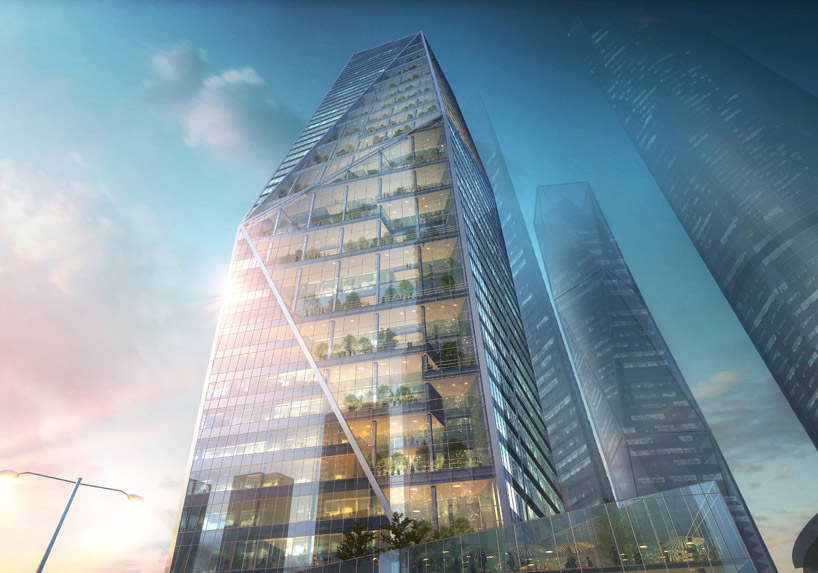 ‘dancing and harmony towers’ image © crystal
‘dancing and harmony towers’ image © crystal
db: to ensure that essence, what part of the design process do you find yourself most invested in?
I wouldn’t even call it a process. it is a process to realize a building, but it’s kind of like music. music is a process, from the first note to the last note. but it’s really about the whole. if you heard all of beethoven’s 5th symphony, but they didn’t play the last note, you would not have heard that entire symphony. despite the fact that 99.999% was objectively there, missing the last chord would have negated the entire performance. I think the same is true in architecture.
db: we were speaking earlier about risks and failure, what would you say is the most important risk you’ve taken in your career?
first of all, I didn’t get to build until I was much older. [that] was difficult. designing buildings that are controversial, that are not nice-looking, that are not so everybody shakes their head and says ‘oh that’s nice, it belongs on the cover of a magazine’, but buildings that can be disturbing to people, could be upsetting, could be considered ugly, could be considered horrible. ah, that’s the real truth of architecture! and when I designed my first building, the jewish museum of berlin, believe me, it was very controversial. very much considered a building that would not be realized; and if it is realized, nothing could happen there, and if something could happen there, nobody would ever come to the building. but that’s the ‘wisdom’ of architecture, which is not always true for what architecture is.
db: up until your first building was realized you’ve working in poetry, set design, music; how have these other disciplines fed into your architectural practice?
great question. I think, totality, because architecture is not about itself, it’s about everything but itself. it is about music, its about poetry, it’s about life, it’s about politics, it’s about history, technology. it’s about all of those things, so in a way, without being involved in those other things, you can’t do anything except ‘a nice building’ and who wants nice buildings? [buildings] of that sort don’t really get involved in that complicated life that is all around us at every moment. so it is really about difficulty. it’s not about ease. it’s easy to do stupid things. it’s very difficult to do things that are very good.
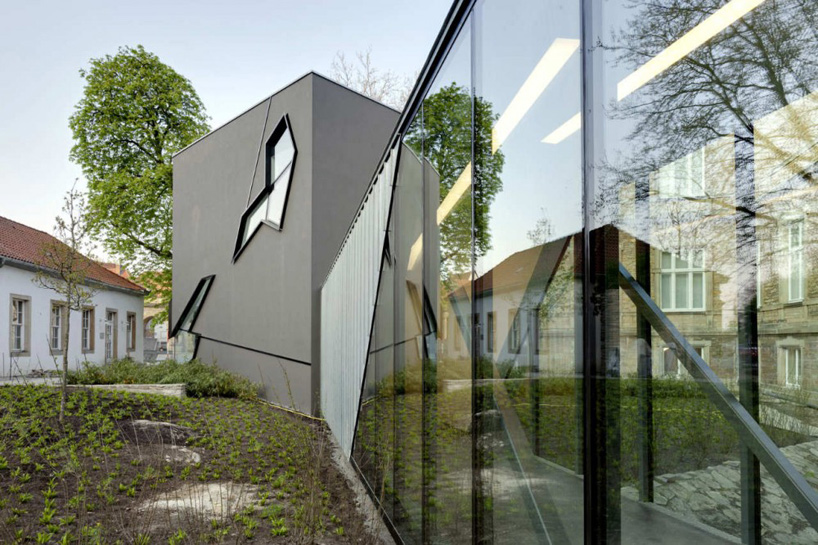 ‘extension to felix nussbaum haus’image © bitter bredt
‘extension to felix nussbaum haus’image © bitter bredt
db: what are the basic questions you ask yourself in any project?
you have to question. you have to not try to answer. don’t come up with an answer, come up with a question. and it may be that the building, or what you’re doing in any realm of engagement, is still a question at the end. maybe a bigger question than when you started. to me, those are the great masterworks of art, architecture, music and culture. things that evoke, even today, though they were done a thousand years ago, the questions. why are we doing this? who are we? where are we going? what is it all about? what is the future?!
db: so do you agree with goethe when he says ‘architecture is frozen music’?
well, that’s a beautiful kind of symbol he created. frozen music. but I don’t like it. it’s a very romantic german idea. I don’t like the ice in architecture. I don’t like the silence of the frozen world. the apocalyptic notion of the romantic architecture that you can see in the famous [caspar david] friedrich painting with the man at the top a a hill, standing with the overwhelming irreality of the world around him. that’s not my view. no, architecture to me, isn’t frozen music. it’s something else, it’s living. it’s alive. it’s more like a human being. it has vulnerabilities, a soul, a heart, problems, anxieties. it asks questions. it’s mortal.
db: so what types of questions are you asking yourself in this stage of your career? what’s next?
well, every building! I’m building a building in belfast, the center for peace-building and reconciliation between protestants and catholics at the famous maze prison. so you ask the question, how can people come together, as divided as they are about religion, by different fundamentals? how can people become more human? that’s the idea, to bring in something good in architecture, not just to build a building.
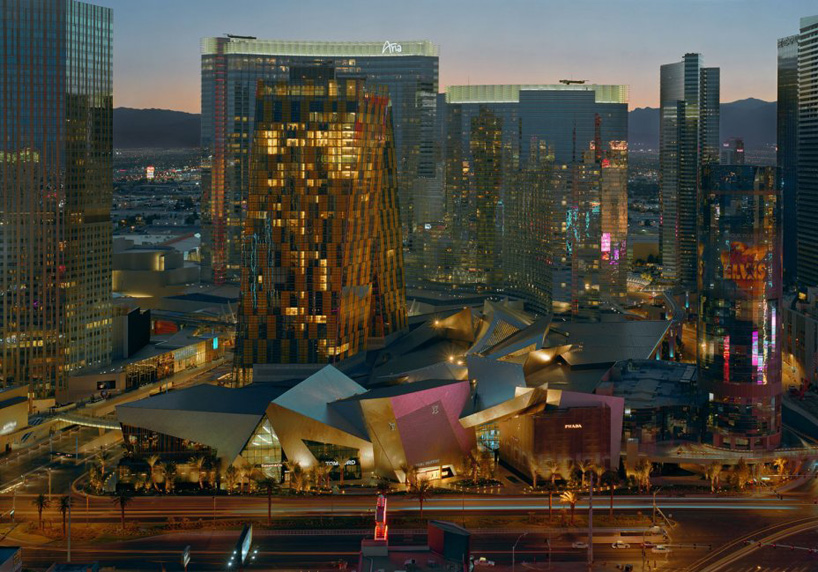 ‘crystals at citycenter’image © robert polidori
‘crystals at citycenter’image © robert polidori
libeskind discusses milan and the future of architectsvideo © designboom
